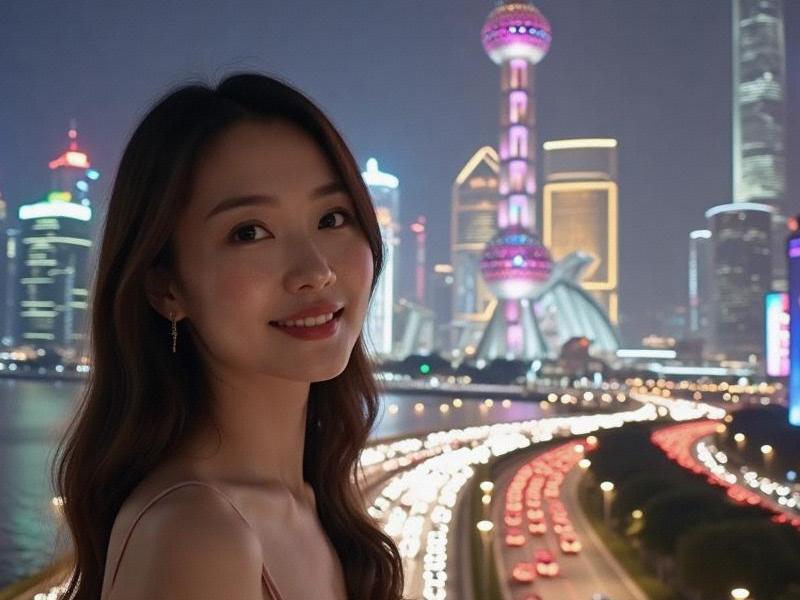This investigative report delves into how Shanghai women have become cultural trendsetters and economic powerhouses, balancing Chinese traditions with global sophistication while redefining gender norms in contemporary China.

In the shimmering landscape of Shanghai's skyscrapers and historic lanes, a distinctive feminine energy pulses through the city's veins. Shanghai women, often romanticized as the "Orient's Parisiennes," have evolved far beyond their beauty stereotype to become architects of China's social and economic transformation.
The Shanghai Woman Code:
What distinguishes these urbanites:
1. The "Triple Threat" Ideal: Expected to excel in career, family, and personal cultivation
2. Linguistic mastery: Code-switching between Shanghainese, Mandarin, and international languages
3. Financial sovereignty: 75% independently manage investments (Shanghai Women's Federation 2025)
4. Educational leadership: 72% hold tertiary degrees, with 25% pursuing postgraduate studies
Corporate Queens:
Professional dominance statistics:
- 48% of C-suite positions in Fortune 500 China HQs held by women
- Female-founded startups account for 42% of Shanghai's tech incubators
- Women represent 61% of financial sector professionals
- Highest female board membership rate in Asia (38%)
Trailblazers like biotech entrepreneur Dr. Zhou Min and fintech innovator Lisa Cheng exemplify this trend.
Fashion as Power:
上海品茶网 Shanghai's style revolution:
1. "Neo-Cheongsam" movement fusing traditional silhouettes with tech fabrics
2. Rise of "Conscious Glamour" sustainable luxury brands
3. Streetwear blending Mao-era motifs with futuristic designs
4. Virtual fashion shows featuring AI-generated models
The annual Shanghai Fashion Week now dictates trends across Asia.
Cultural Custodians:
Women preserving heritage:
- 68% of intangible cultural heritage practitioners are female
- Revival of 1930s jazz culture by millennial entrepreneurs
- Modern interpretations of Jiangnan watertown folk arts
- "Digital guofeng" influencers promoting traditional aesthetics
Social Architects:
Reshaping urban life:
1. "Matriarchal meritocracy" in family decision-making
上海花千坊龙凤 2. Women leading 89% of household education investments
3. Pioneering co-living spaces for single professionals
4. Revolutionizing dating culture through exclusive social clubs
The Pressure Paradox:
Contemporary challenges:
- "Superwoman Syndrome" from unrealistic expectations
- Beauty economy pressures (¥15,000 average annual spend on appearance)
- Marriage timing conflicts (average first marriage age now 32)
- Generational clashes over work-life balance priorities
The Shanghai Sisterhood Network:
Powerful support systems:
1. The "Jasmine Circle" - elite female executive network
2. Women's investment clubs funding female-led ventures
3. Digital mentorship platforms connecting 50,000+ professionals
4. "Aunties 2.0" - modernized community support networks
上海品茶网
Cultural Icons:
Contemporary standard-bearers:
1. Elena Wang: AI fashion designer merging algorithms with qipao
2. Professor Zhang Li: Neuroscientist revolutionizing beauty tech
3. Madame Dong: 105-year-old culinary guardian of Benbang cuisine
4. Tina Xu: Blockchain pioneer developing women's financial DAOs
Future Feminine:
Emerging trends:
1. "Flexi-identity" embracing multiple life paths
2. Later childbearing with advanced fertility planning
3. Political ascendancy (40% of local legislative seats targeted by 2030)
4. Leadership in climate innovation and green tech
As Shanghai solidifies its position as a 21st-century global capital, its women continue to craft an unprecedented feminine paradigm - one that harmonizes Confucian wisdom with Silicon Valley ambition, traditional aesthetics with futuristic vision. They represent not merely the face of modern China, but its intellectual vanguard and cultural compass. In their Louboutins and qipao-inspired power suits, Shanghai women stride confidently between worlds, rewriting the rules of feminine success on their own terms.